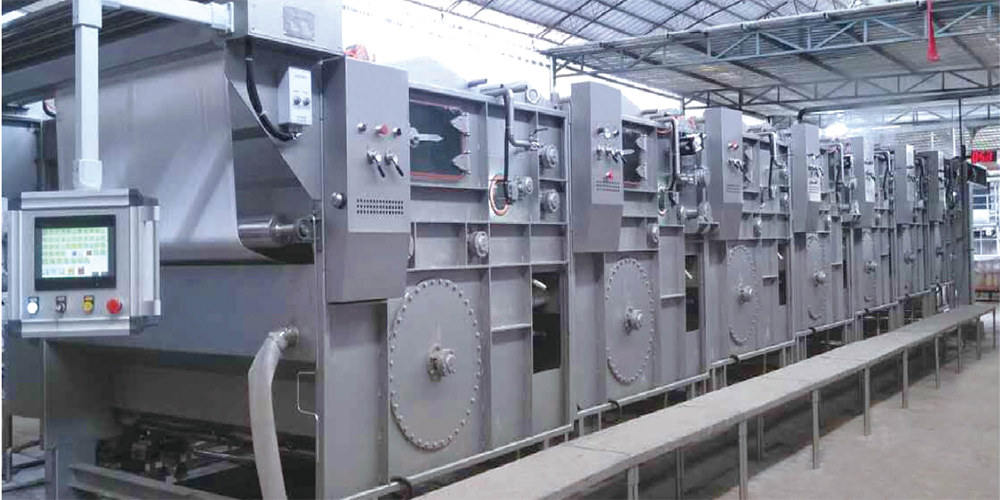Open width degreasing, pre-shrinking, desizing, flattening washing machine

Open width degreasing, pre-shrinking, desizing, flattening washing machine
Application
It took FOUND 3 years to develop and introduce a new generation of high efficiency, energy saving, open width washing machine after printing. With a modular design, it is suitable for washing after dyeing, pre-shrunk washing and efficient washing after printing,and various washing process. It can be combined flexiblely for different process requirements and reach optimal configuration. It can meet the washing requirements for various fabric (cotton, and cotton ammonia, and fiber, and cashmere class, grams heavy range is 80-600GSM), particularly in the washing process after dyeing and after printing, greatly savings water and steam cost. At the same time, better equipment structure and design improve the washing quality of fabric and provide strong support to customers for participating in market competitions
Lateral move with low tension centering fabric loading system
Adjustable dual thread detaching system, and equipped with scrolling type lateral move infrared radiation centering device, to insure the fabric is centering loaded under low tension to prevent stretched and distorted.
Open-width low tension stacking immersing unit
Through Stacking 3-8 minutes and high flow of water spray circulation, it makes the grease oil and slurry fully emulsified and puffed. Under the action of high temperature and auxiliaries, the fabric shrinks uniformly and sufficiently, to achieve the effective weight and shrinkage.
Open-width efficient rotary drum spray washing unit
Fabric is wrapped with the punching rotary drum, and is penetrating washing by six water jets, with the adjustable water pressure, has no damage to the fabric. The machine also comes with separated filtration systems to increase repeating utilization of water.
Automatic dynamic filtration system
Dynamic filtration system will filter out the impurities and hairiness after washing; greatly increases repeating utilization of water, with no frequently cleaning by human
